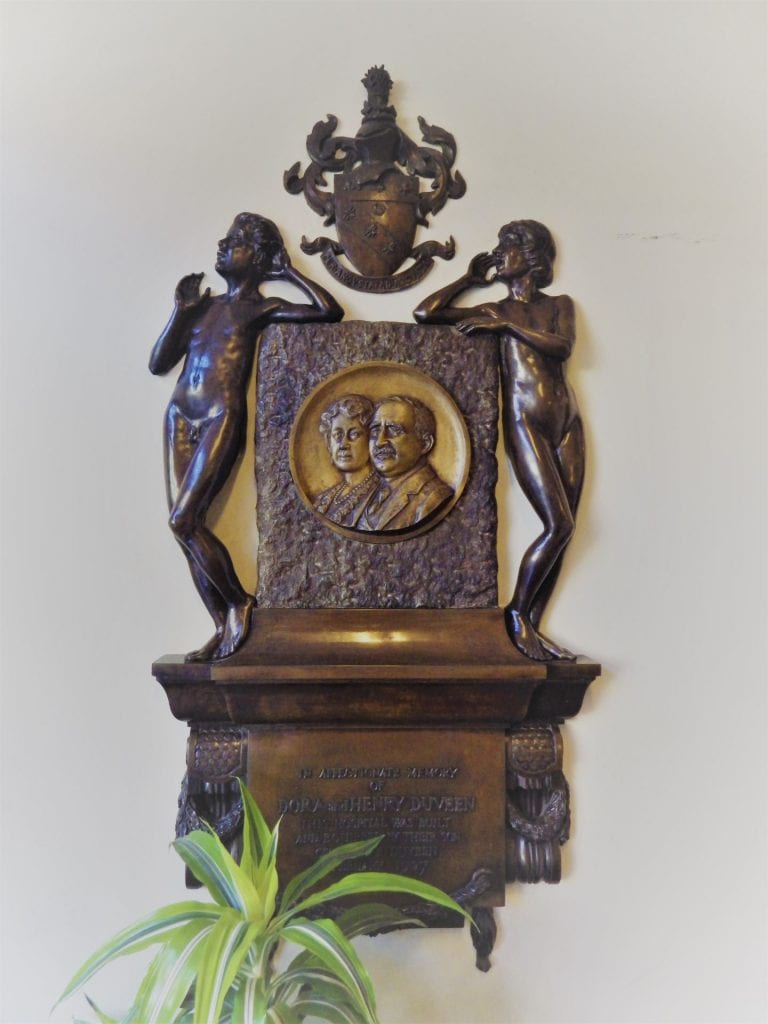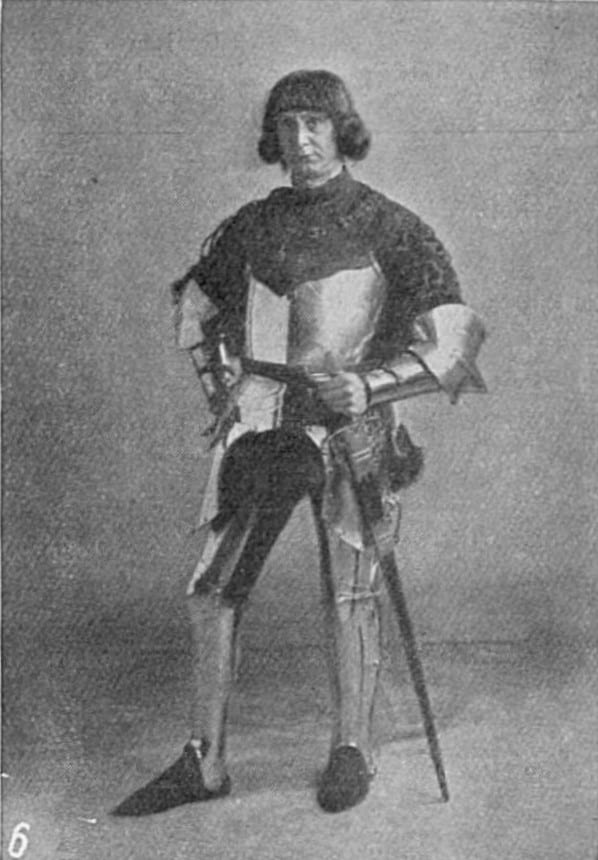” People who can hear think it is rather comic not to be able to, instead of a bitter tragedy” – Felix Joubert’s Royal Ear Hospital memorial, “Deafness Listening”
By H Dominic W Stiles, on 4 October 2019
In 1927, Neville Chamberlain, then Minister for Health, opened the new Royal Ear Hospital building in Huntley Street. Ninety-two years later, the Royal National Throat Nose and Ear Hospital, which incorporated the Royal Ear Hospital, is moving back to Huntley Street in two phases.
The Huntley Street site was paid for by Sir Geoffrey Duveen (1883-1975) who was a barrister and, like his father, a philatelist. The hospital was a memorial to his parents.
WAR AGAINST DEAFNESS. There is great sympathy as well as great friendship, between the two men who are putting up a memorial to the conquest of deafness at the Royal Ear Hospital in London Felix Joubert, the artist who designed the charming group of “Deafness Listening,” has had to give up the art of the foils, at which he won international fame, owing to ear trouble. Geoffrey Duveen, the man who gave the memorial and has rebuilt add re-endowed the hospital at his own expense, is a business magnate of varied interests, who has found deafness a great burden and is determined to alleviate it where he can. “You’ve no idea how widespread it is,” he told me, “especially among the children in the elementary schools. Deafness gets no sympathy! People who can hear think it is rather comic not to be able to, instead of a bitter tragedy.”—”Mr. Gossip” In the “Daily Sketch” (Belfast Telegraph)

The artist of the attractive bronze plaque, Jules Felix Amedée Joubert, was born in London in 1872, son of Henri, an upholsterer who had a business in the Kings Road, Chelsea. Henri’s father, Jean Baptiste Amidée Joubert, also an upholsterer, born in Paris in 1796. He came to London, where he married Louise Pariens in 1828, and died in Marylebone, in 1866. He was certainly not described as deaf when younger, but in 1927 he was fifty-five, and presumably age-related hearing loss meant he could not hear the judges when fencing, which is what we might suppose caused him to give it up. Duveen obviously felt his hearing loss keenly, and thousands of patients ever since have cause to thank him for his generosity.

 I have found scattered records of Felix Joubert, as he seems to be most commonly known, but I am sure that someone could probably put together an interesting essay on him with a little archival work. Many newspaper records mention him for his fencing, and while he was on the initial team for the 1912 Olympics, he was not in the team that finally competed. One of Joubert’s passions was for old arms and armour, and he made a collection which he donated to the Musée Masséna in Nice, in 1925. He is also supposed to have ‘forged’ items – perhaps it would be kinder to say ‘imitated’, but maybe he just took his chances to make some money from gullible people with money. During the Great War he designed a trench knife that was supposed to follow an ancient Welsh pattern but was in reality his own design, with influence from ancient swords.
I have found scattered records of Felix Joubert, as he seems to be most commonly known, but I am sure that someone could probably put together an interesting essay on him with a little archival work. Many newspaper records mention him for his fencing, and while he was on the initial team for the 1912 Olympics, he was not in the team that finally competed. One of Joubert’s passions was for old arms and armour, and he made a collection which he donated to the Musée Masséna in Nice, in 1925. He is also supposed to have ‘forged’ items – perhaps it would be kinder to say ‘imitated’, but maybe he just took his chances to make some money from gullible people with money. During the Great War he designed a trench knife that was supposed to follow an ancient Welsh pattern but was in reality his own design, with influence from ancient swords.
For many years the Jouberts lived in a house at 2 Jubilee Place, Chelsea. I do not know where Joubert studied, but he married Blanche Cappé in 1907.
Joubert was it seems friendly with many famous people, including the Prince of Monaco and the Rothschild family. He designed scenes for the theatre in 1912 (The Stage – Thursday 03 October 1912), a stained glass window in 1918, the first with a khaki clad soldier according to the Illustrated London News (Saturday 08 June 1918), and he even made a film in 1922. Clearly he was a talented and interesting man.
Incidentally, it seems Duveen’s wife was the first person to have a radio in her car – a cadillac – in Britain, in 1926, but this involved her chauffeur slinging a 50 foot aerial between the car and a tree (The Times, 1997)!
Joubert died in Nice on the 1st of June, 1953, and is buried in Brompton cemetery.
The idea of the ‘conquest of deafness’ is one that might still appeal to some in the medical profession, but a greater understanding of Deaf people and deafness suggests that it is probably a form of words we now best avoid.
Joubert is seen here dressed as a knight presumably in his own armour, at the Chelsea Arts Club Ball (The Sketch – Wednesday 13 March 1912).
Belfast Telegraph – Wednesday 04 July 1928
Eason, Kevin The Times (London, England), Saturday, February 1, 1997, Issue 65802, p.1[S1]
Illustrated London News – Saturday 19 February 1927
Leeds Mercury – Thursday 10 February 1927
Ancestry.com. UK, Outward Passenger Lists, 1890-1960 [database on-line]
https://sculpture.gla.ac.uk/view/person.php?id=msib1_1271953076
1851 Census – Class: HO107; Piece: 1475; Folio: 380; Page: 8; GSU roll: 87798
1881 Census – Class: RG11; Piece: 82; Folio: 112; Page: 41; GSU roll: 1341018
1891 Census – Class: RG12; Piece: 59; Folio: 156; Page: 6
1901 Census – Class: RG13; Piece: 72; Folio: 143; Page: 43
1911 Census – Class: RG14; Piece: 381
One Response to “” People who can hear think it is rather comic not to be able to, instead of a bitter tragedy” – Felix Joubert’s Royal Ear Hospital memorial, “Deafness Listening””
- 1
 Close
Close


The 1918 stained glass window designed by Joubert was for Major Saulez and is in Willingale Church. The production of the memorial was organised by one of his former Lieutenants Alan Vyvyan Insole who had been invalided out of the army in 1917 and lived in Chelsea.
In 1920 Joubert was commissioned by the Insole family to design a stained glass window in memory of Alan’s father George Frederick Insole and also a memorial to his brother Claud Insole who was killed in action in 1918. Both were erected in Llandaff Cathedral.
The window is described and illustrated in the Arctitect 21 Jan 1921.
We only have a description of the memorial to Claud – an angel holding Claud’s actual military sword – point downwards.
Both the window to George Frederick and the memorial to Claud were destroyed when Llandaff Cathedral was bombed in 1941. However, the bronze plaque beneath the memorial to Claud survived and is now in Insole Court in Cardiff. I can supply a photo of the plaque if you are interested.